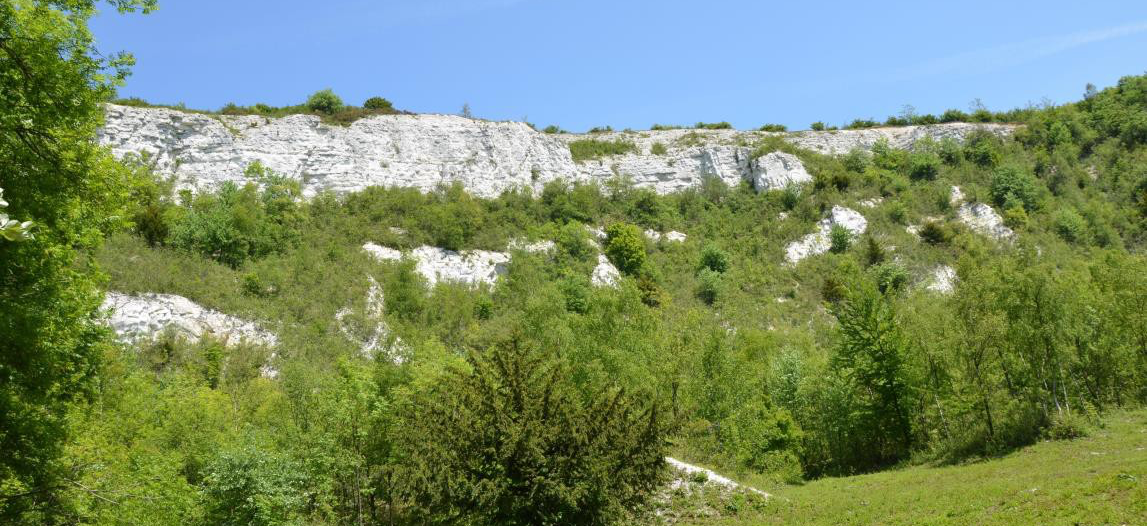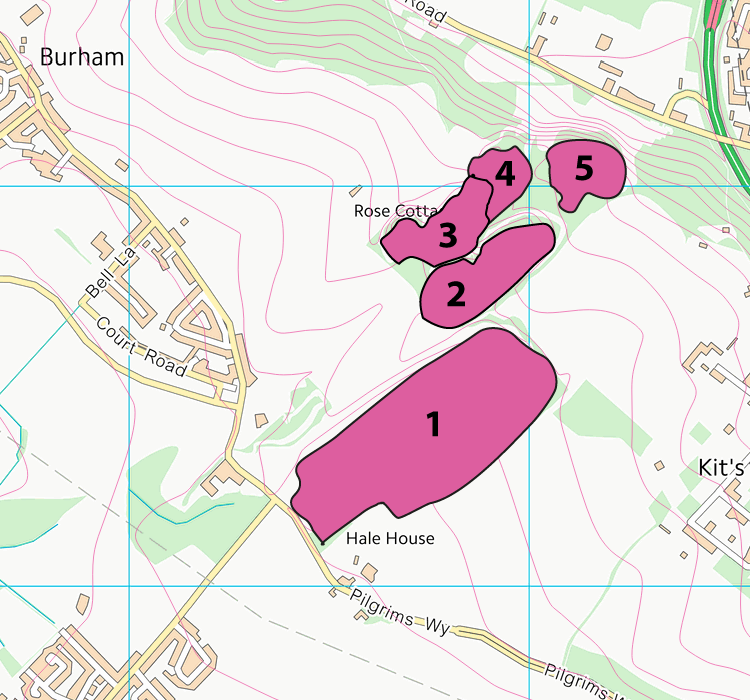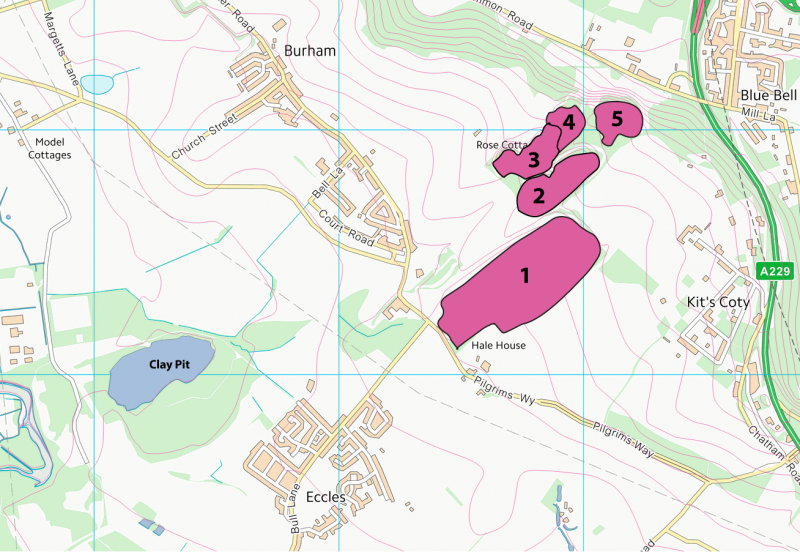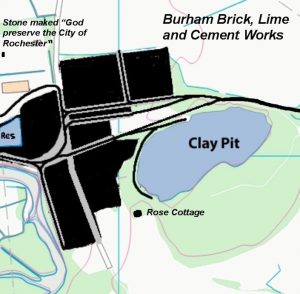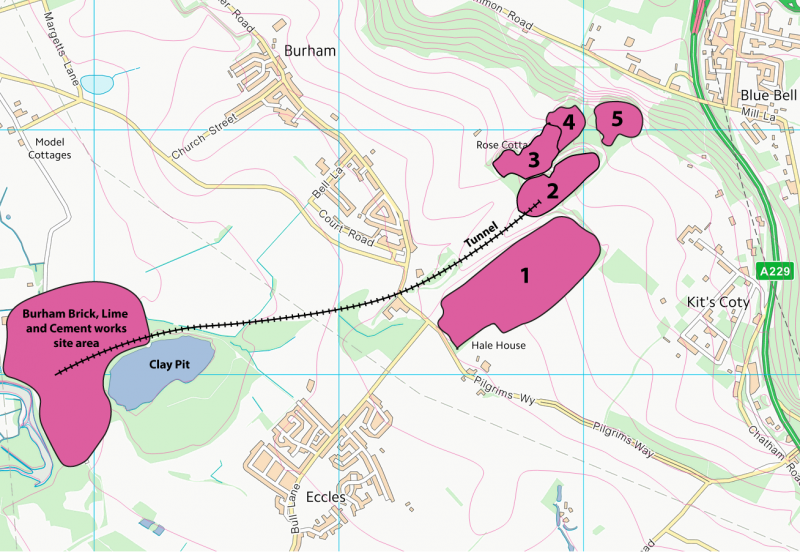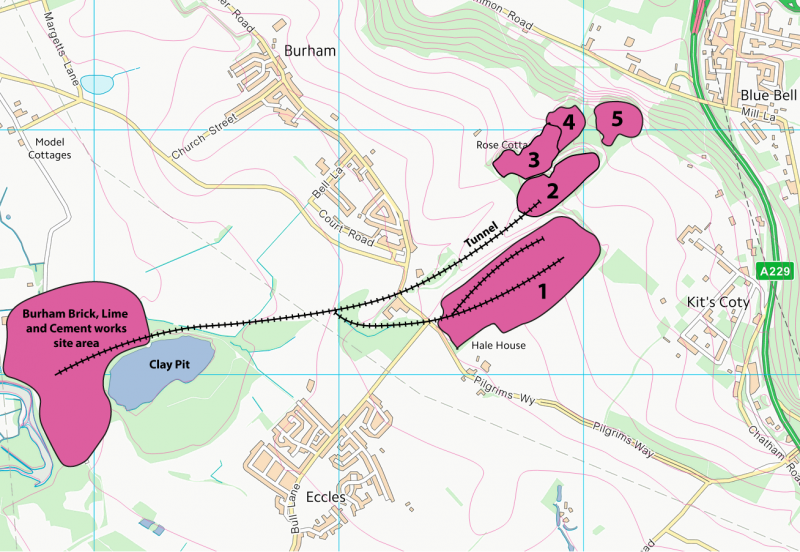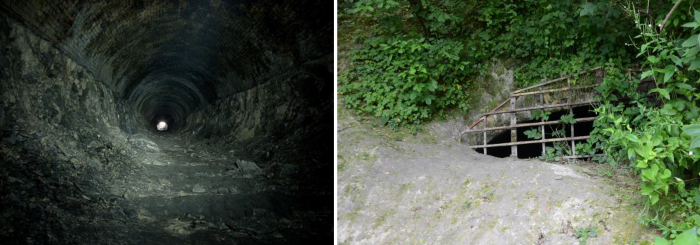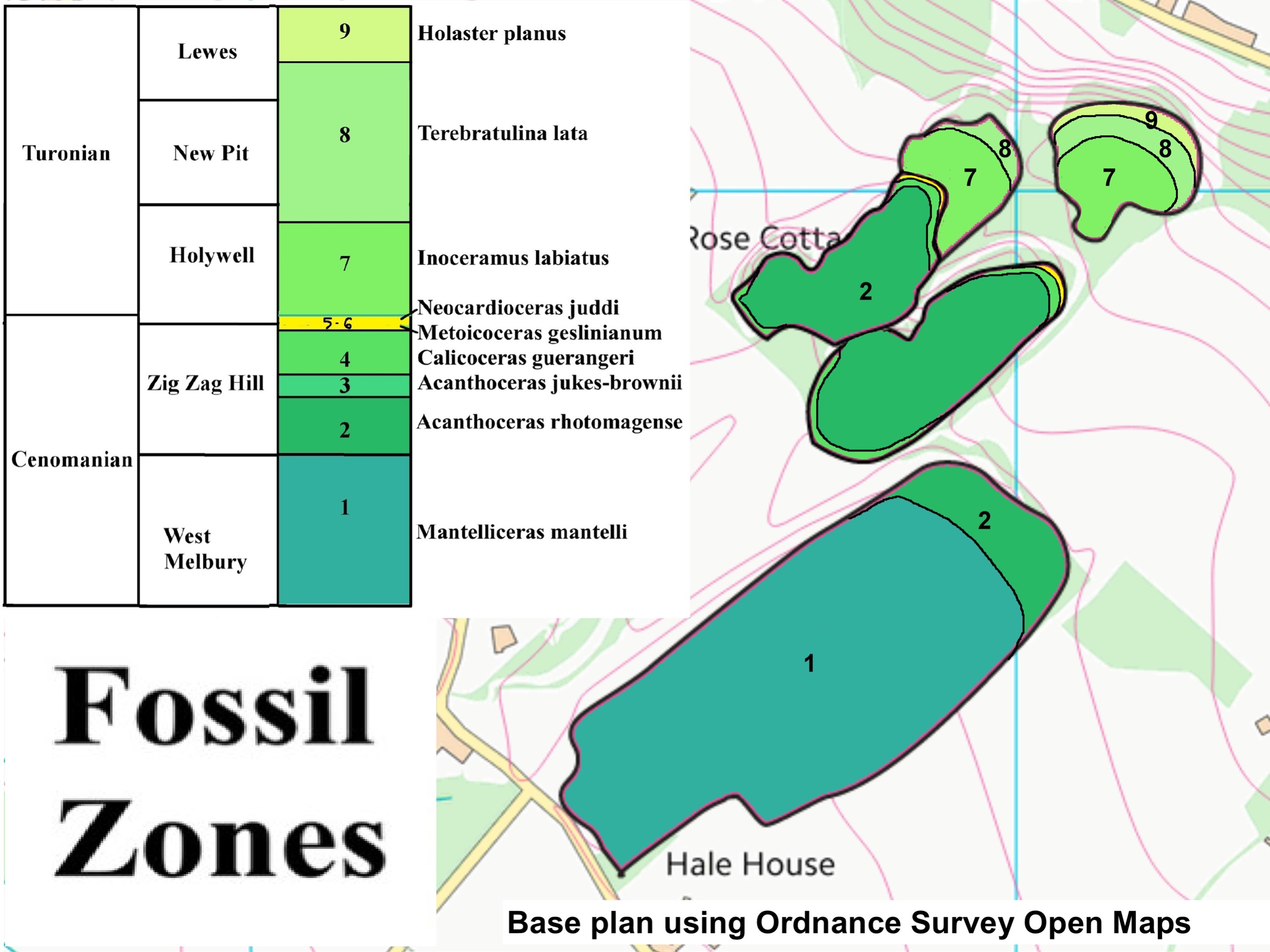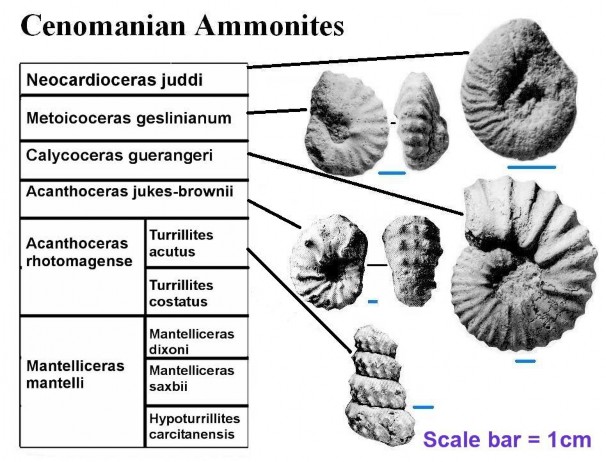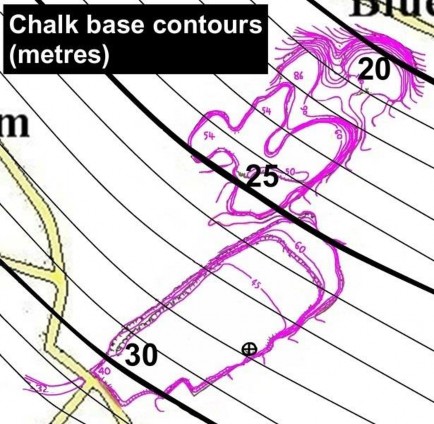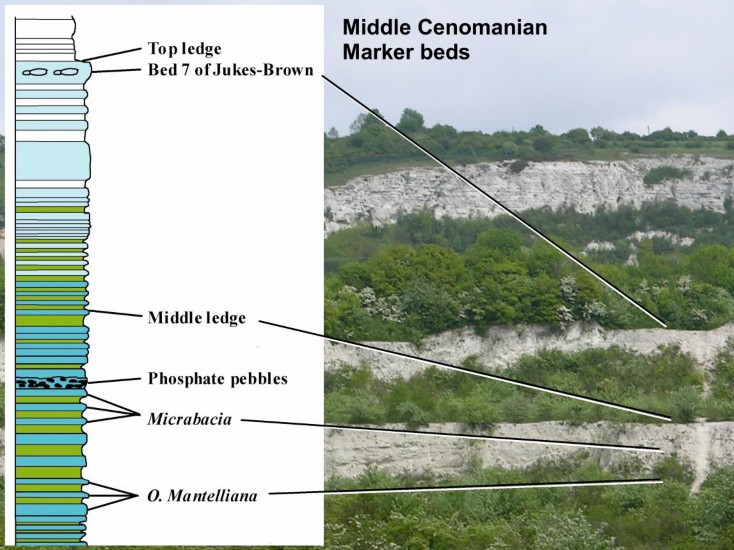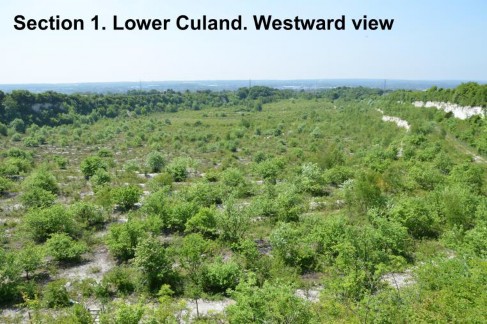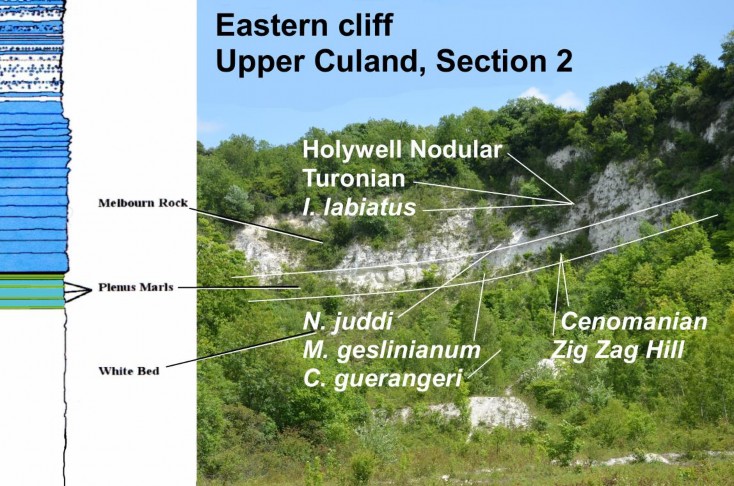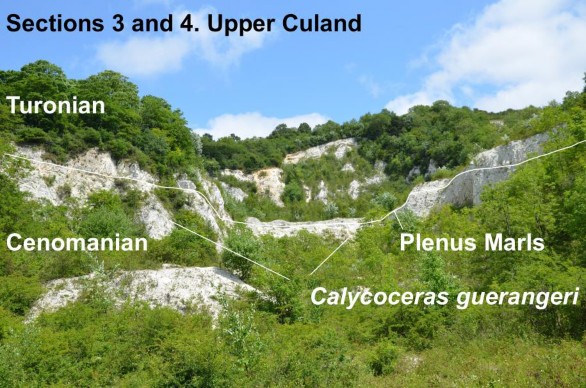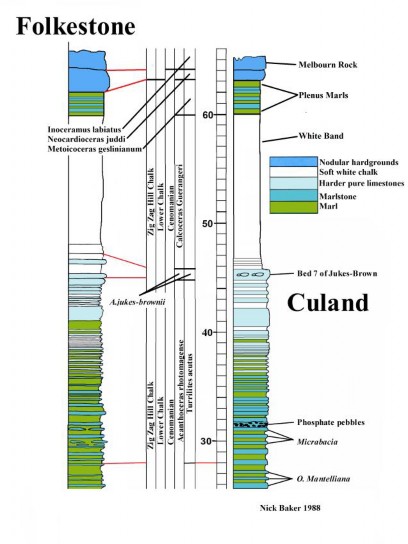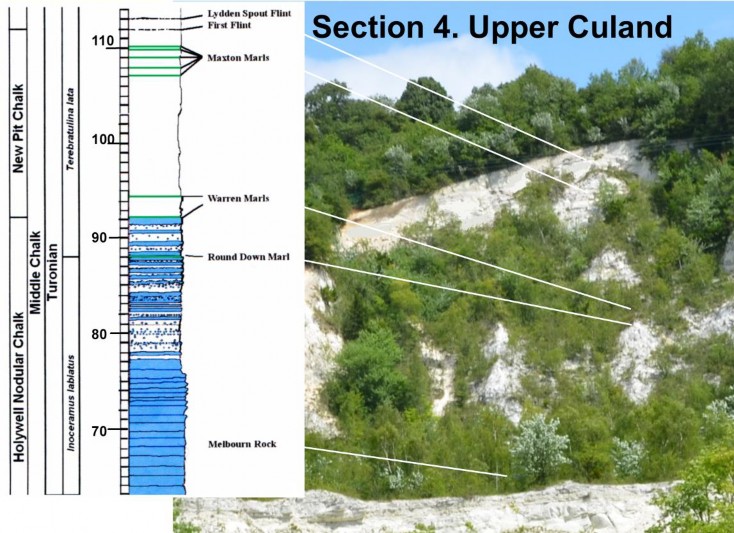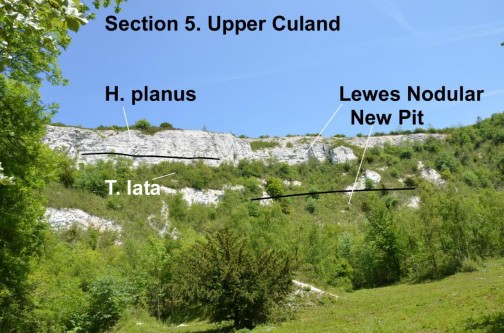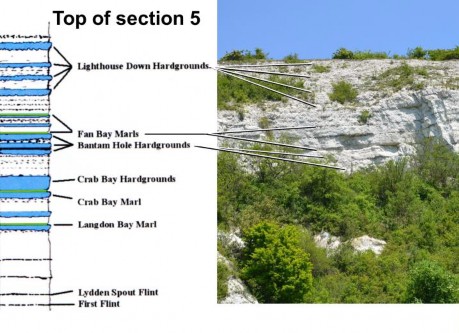I cannot leave this account without some consideration of the development of the pits as geological sites, and also the possible future development of the pits as possible sites for housing development. In terms of the latter, these thoughts are my own and are not related to any current proposals. Nor, am I qualified as a geo-engineer. What follows is purely based on my observations of these sites in the past 55 years. Firstly, Lower Culand is notably damp. When I first saw the pit in February 1961, the whole south-western half was flooded. Flooding occurs most winters and in one in three the water depth is sufficient to set up a stream through the tram-way tunnel. The picture on the right was the situation in April 2014. The situation for Lower Culand is that it is close to the Gault—only about 5-10m above the Gault in the south-western end and thus has a high water table. The situation was the same at Holborough but there the village has been built on a rise (15-25m) above the lake and wetland. At Culand, the floor of the quarry rise 5m at most. In line with this, the access tunnel currently provides the only means of drainage.
Even if you do drain, the ingress of water means you are also draining the surrounding countryside. Lower Culand alone, receives 1000 tonnes of water with every 5mm of rain. In a wet year this could be 170,000 tonnes!
More immediately, there is a strong need for a roundabout to be built at the junction of the Burham-Eccles road. This means that at least 100m of the tramway cutting will have to be in-filled. This will necessitate, drainage pipes to be in-put though the tunnel and the infill. At what level do you put the pipes? If you are thinking of the wetland, then you put them at the floor-level of the tunnel. If you think in terms of housing, you put them several metres lower. So, you do not wait for a decision on the housing. You do the latter and wave goodbye to the wetland.
Let us consider what happens assuming the status quo is maintained. Usually, with regard to conservation, natural history and geology do not mix well. Lower Culand, as a wildlife site has, effectively, been shut off from any geological potential. The fencing had to shut off the cliffs from the browsing of the imported goats (but why barbed wire?)
The goats were imported to keep down the haw- thorne, wild rose, wayfaring tree, and buddleia, in order to encourage chalk grassland. Now, there is chalk grassland in sections 2, 3 and 5 (see to right). This may be because these sections are dryer. Lower Culand has never showed signs of producing grass, except on the screes. The environment is unique, not as grassland, but as bare chalk land.
I believe it is possible to maintain the geological potential, by active conservation, and not let it all go under lock and wire. All that is really required is the maintenance of several short sections. At each section a gap is allowed and the fence is rerouted up to the cliff, and keeping the screes free of vegetation.
